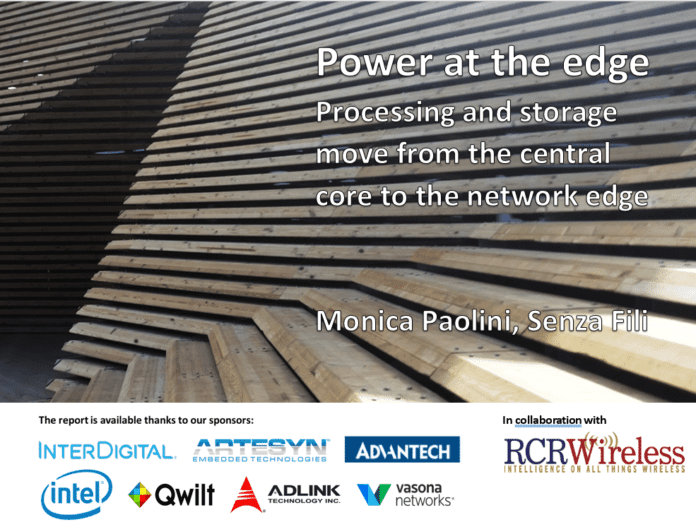Location, location, location. Multiple-access Edge Computing (MEC) and edge computing in general are gaining acceptance in both fixed and mobile networks as we increasingly realize the power of location in wireless networks – and especially in virtualized networks. This does not mean the centralized cloud or the big data centers hosting the network core will go away anytime soon. But a rebalancing act is definitely due.
In recent years, there has been a strong push to move everything to a centralized cloud, enabled by virtualization and driven by the need to cut costs, reduce the time to market for new services, and increase flexibility. In the process, we lost sight of how important the location of functionality is to performance, efficient use of network resources and subscriber experience. Physical distance inevitably increases latency.
Central processing and storage limit the ability to optimize RAN utilization. A fully centralized network may be easier and cheaper to run, but it does not always keep subscribers happy.
MEC and other edge computing initiatives address the need to place processing and storage where appropriate, whether a central location or the network’s edge, depending on factors such as applications, traffic type, network conditions, subscriber profile, and operator’s preference.
Virtualization, initially used as the basis for moving to the centralized cloud, is even more foundational in enabling hybrid models, because it gives service providers the flexibility to choose location, hardware and software independently to optimize end-to-end network performance and QoE. Both operators and vendors agree that we need to keep a healthy balance between what remains centralized and what gets distributed to the edge. The same applies to the RAN: in some places a centralized – C-RAN or vRAN – approach makes sense; in others the traditional distributed model works just fine.
In this perspective, virtualization, MEC and 5G, in different but complementary ways, free both fixed and mobile networks from the constraints of a centralized architecture and topology. The new networks can adapt to and accommodate new applications and functions, and can optimize their performance. They replace legacy networks in which applications and functions had to painstakingly overlay an existing, rigid architecture.
In this report, we explore the evolution of the edge’s role in fixed and mobile networks and how it may impact network optimization, value-chain roles and relationships, business models, usage models and, ultimately, the subscriber experience.

